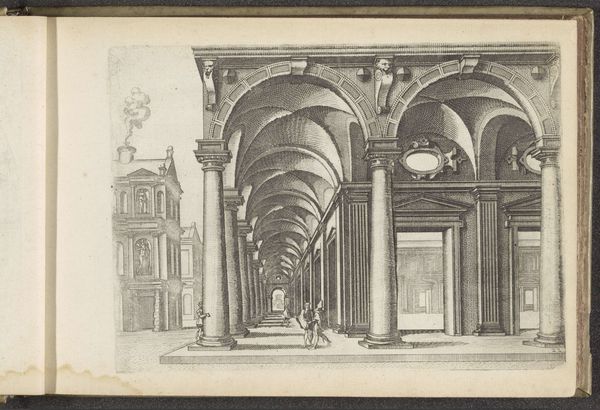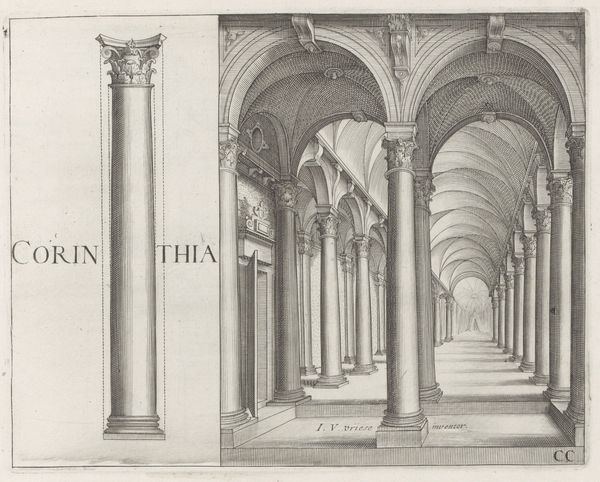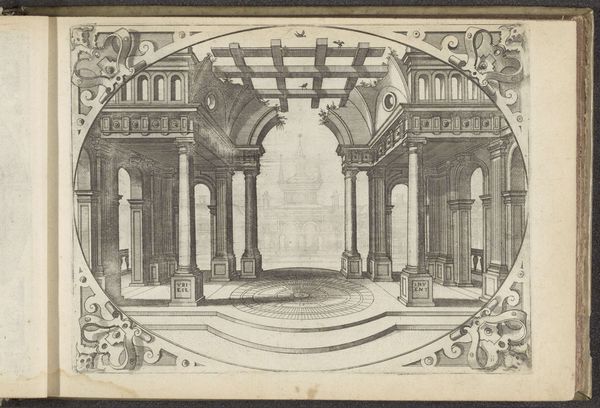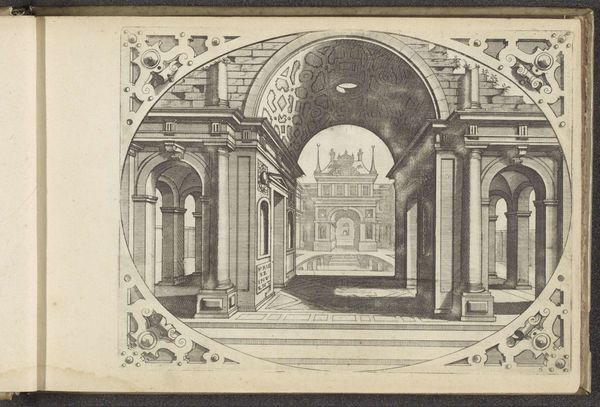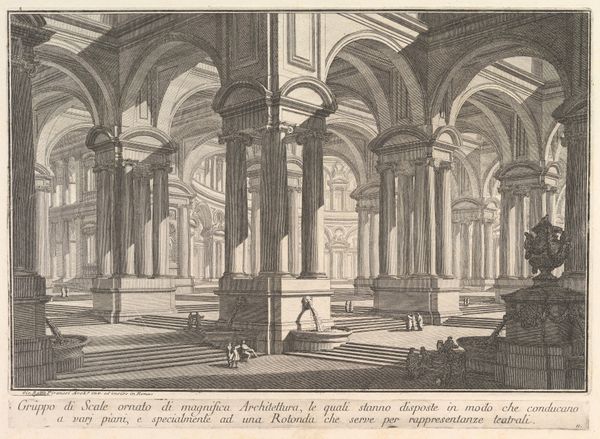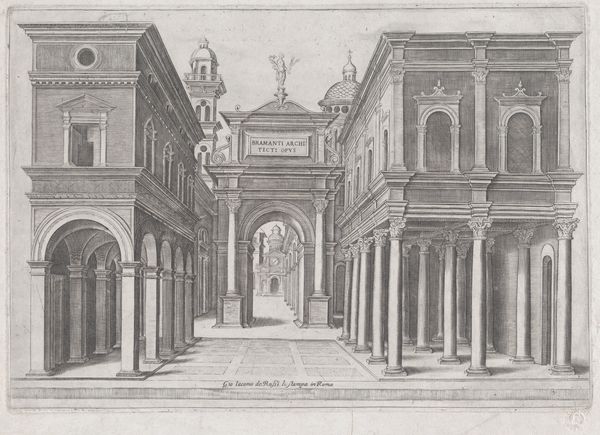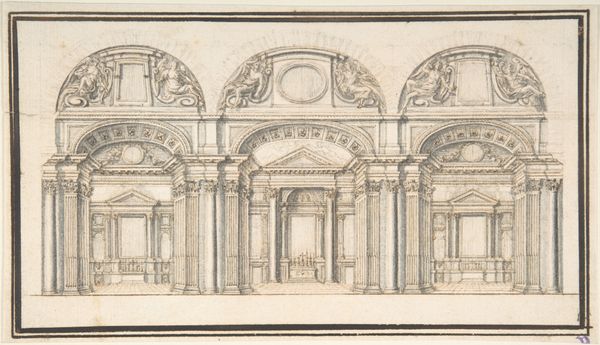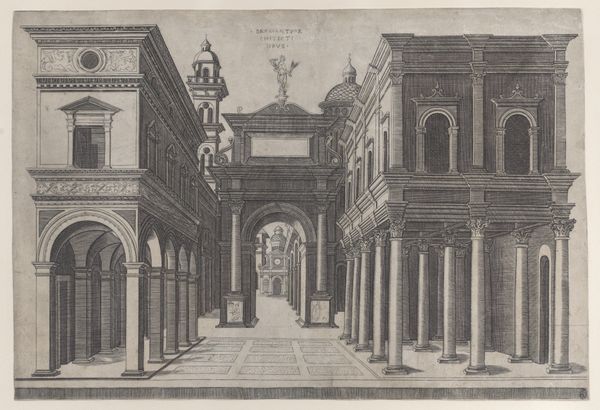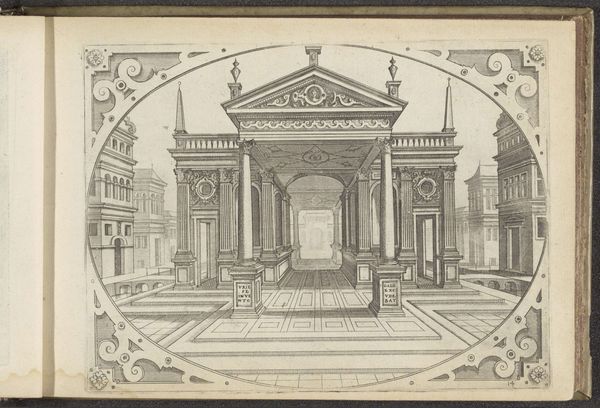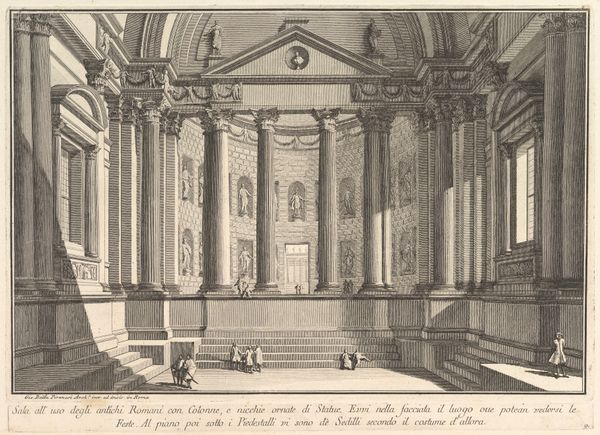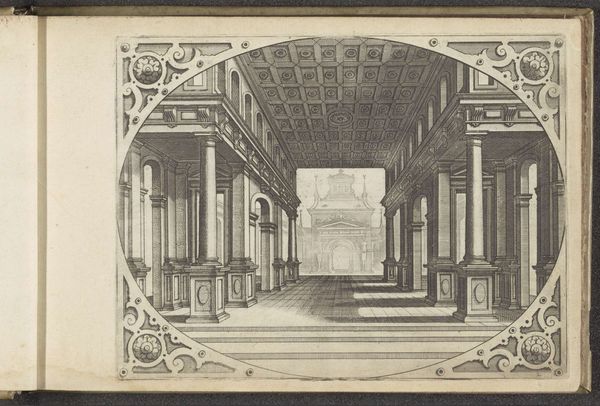
print, engraving, architecture
#
baroque
# print
#
old engraving style
#
perspective
#
geometric
#
cityscape
#
engraving
#
architecture
Dimensions: height 192 mm, width 272 mm
Copyright: Rijks Museum: Open Domain
Editor: So, this is "Zuil van de Ionische orde en een zuilengang," made between 1606 and 1620 by Hendrick Hondius I. It’s an engraving, a print showing an Ionic column and a colonnade. I’m immediately struck by the precision and how it renders space. What catches your eye when you look at this? Curator: I see a powerful statement about order and hierarchy within the early modern urban landscape. The architectural rendering isn't just about perspective; it's about power dynamics. Consider the context: the rise of mercantile cities, increasing social stratification, and the humanist revival of classical ideals. The Ionic column, perfectly replicated, becomes a symbol of this ambition. Do you see how it mirrors a societal desire for structured knowledge? Editor: That's interesting. I was focusing on the aesthetics, the technical skill. So you’re saying it's less about beauty and more about the message? Curator: Not necessarily "less about beauty," but about unpacking whose beauty is being represented, and why. The colonnade itself suggests a carefully controlled public space. Who has access to that space? Who is excluded? The precision itself becomes a statement of control, aligning with the burgeoning power of urban elites and their vision for an ordered society. What do you think the repetitive nature of the columns communicates? Editor: Hmm, maybe a sense of uniformity… like everyone fitting into a pre-defined role? Curator: Precisely. It encourages us to question the inherent biases within these seemingly objective depictions of architecture and challenges us to consider the socio-political landscape that birthed them. We can reflect upon those times. Editor: I never thought about architecture having such a pointed voice. This really opens up new ways to consider art as an intentional political act. Curator: Indeed, it urges us to dissect and interrogate how the built environment actively shapes and reinforces societal narratives and how the printing press amplifies them.
Comments
No comments
Be the first to comment and join the conversation on the ultimate creative platform.

